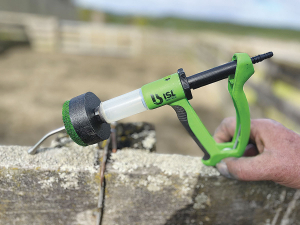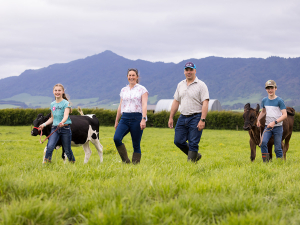Growing up on a South Waikato sheep and beef farm, Penny Ranger has firsthand experience on the day-to-day challenges.
One such challenge, when drenching sheep in a race, is working out which animals have been treated.
This led to the idea of developing a user-friendly marking tool; to give a clear indication of animals drenched and the arrival of the Mark-It drench gun attachment.
Penny, currently a Year 13 student at St Peters School in Cambridge, was the winner of a Fieldays Innovation Award, which she admits was originally her elder sister’s idea, but oversaw the development and refinement into a saleable product.
Like many great ideas, simplicity is the key, with a 3-D printed nozzle attachment, which houses a pre-loaded coloured sponge which leaves a mark on the side of the animal’s face as it’s drenched.
Said to offer a 100% indication when drenching, the attachments help reduce increasingly expensive drenching costs by eliminating double- drenching, while also giving confidence that the whole mob has been treated.
The earliest prototype was built in metal, but proved to be heavy and clumsy, so was refined with the use of a PLA plastic, with the attachment now only weighing thirty-three grams.
During the development, Penny overcame initial issues with sourcing and cutting the applicator sponges, then dyeing them with ink. The current version now uses a paint-like marking solution that, with a thicker consistency, doesn’t clog or drip.
Penny was selling starter packs at Fieldays, including the attachment and three dyed sponges for a bargain $35 and is currently setting up a website for online purchasing.



















